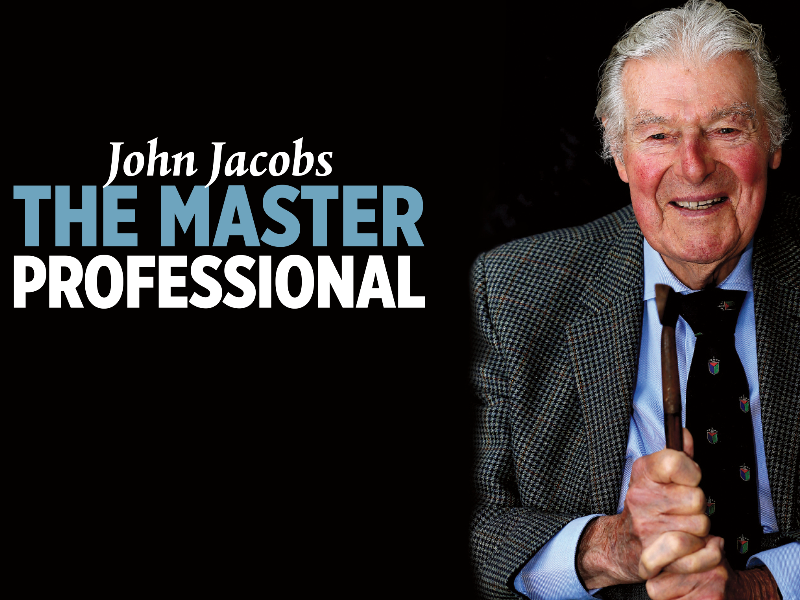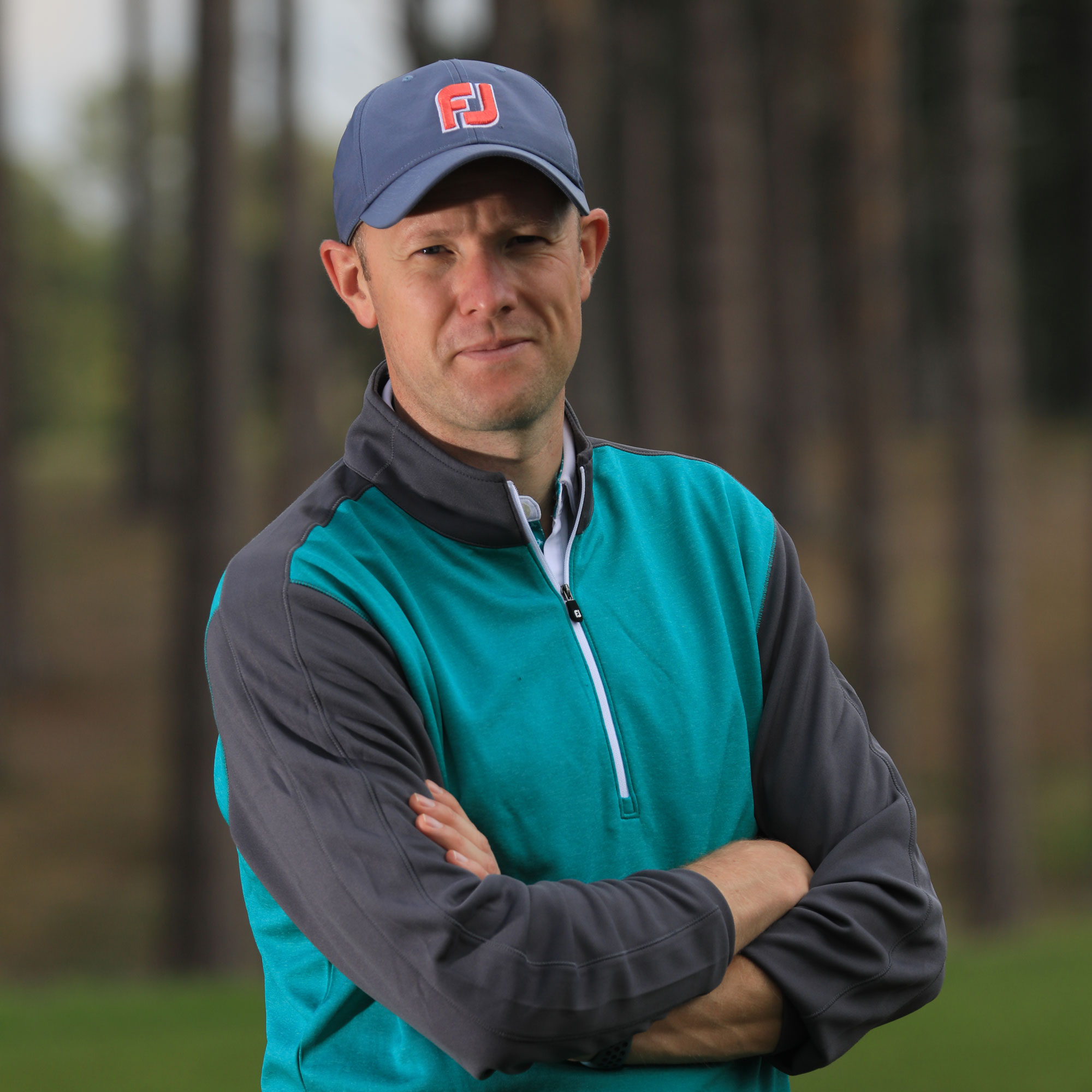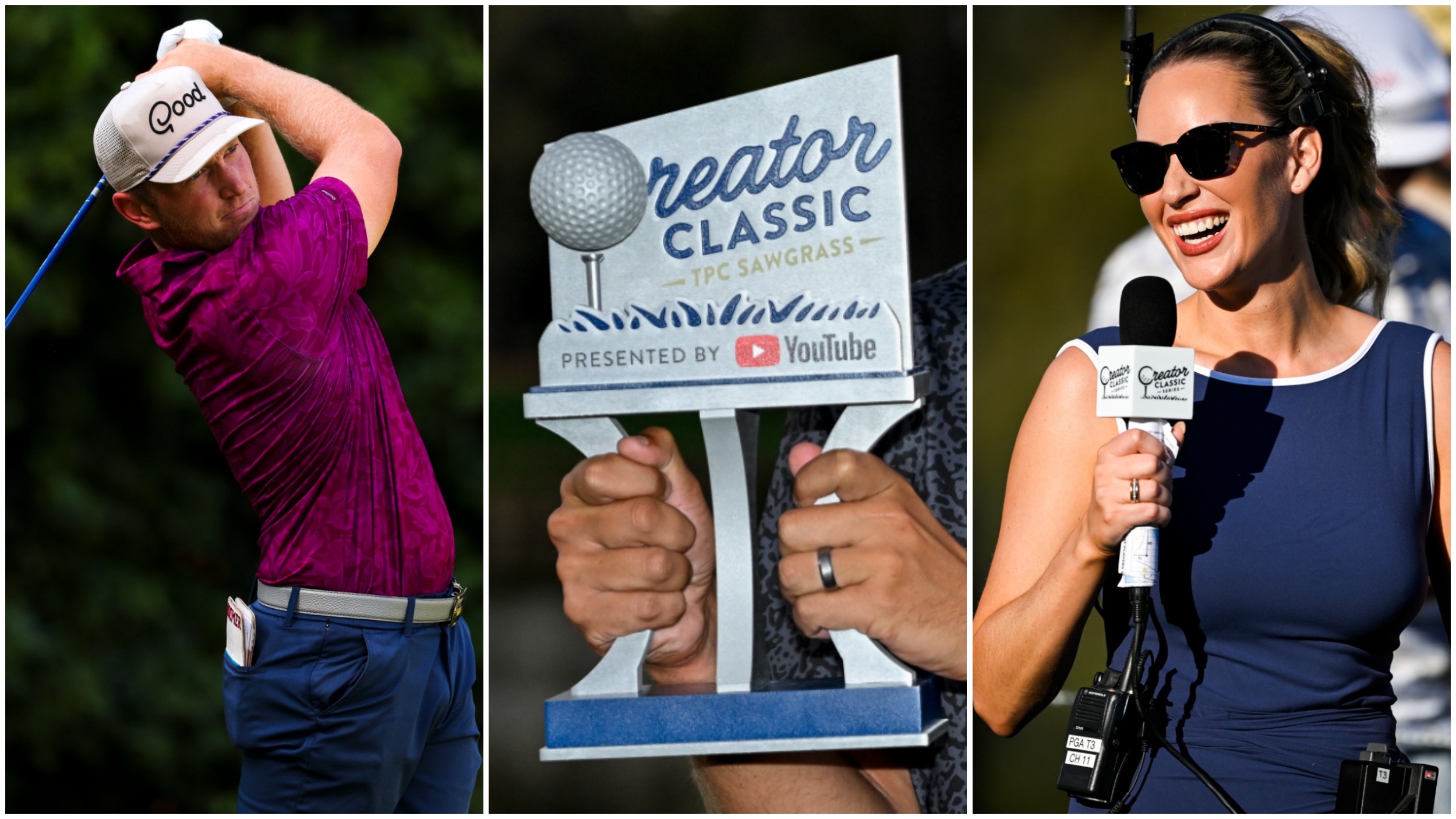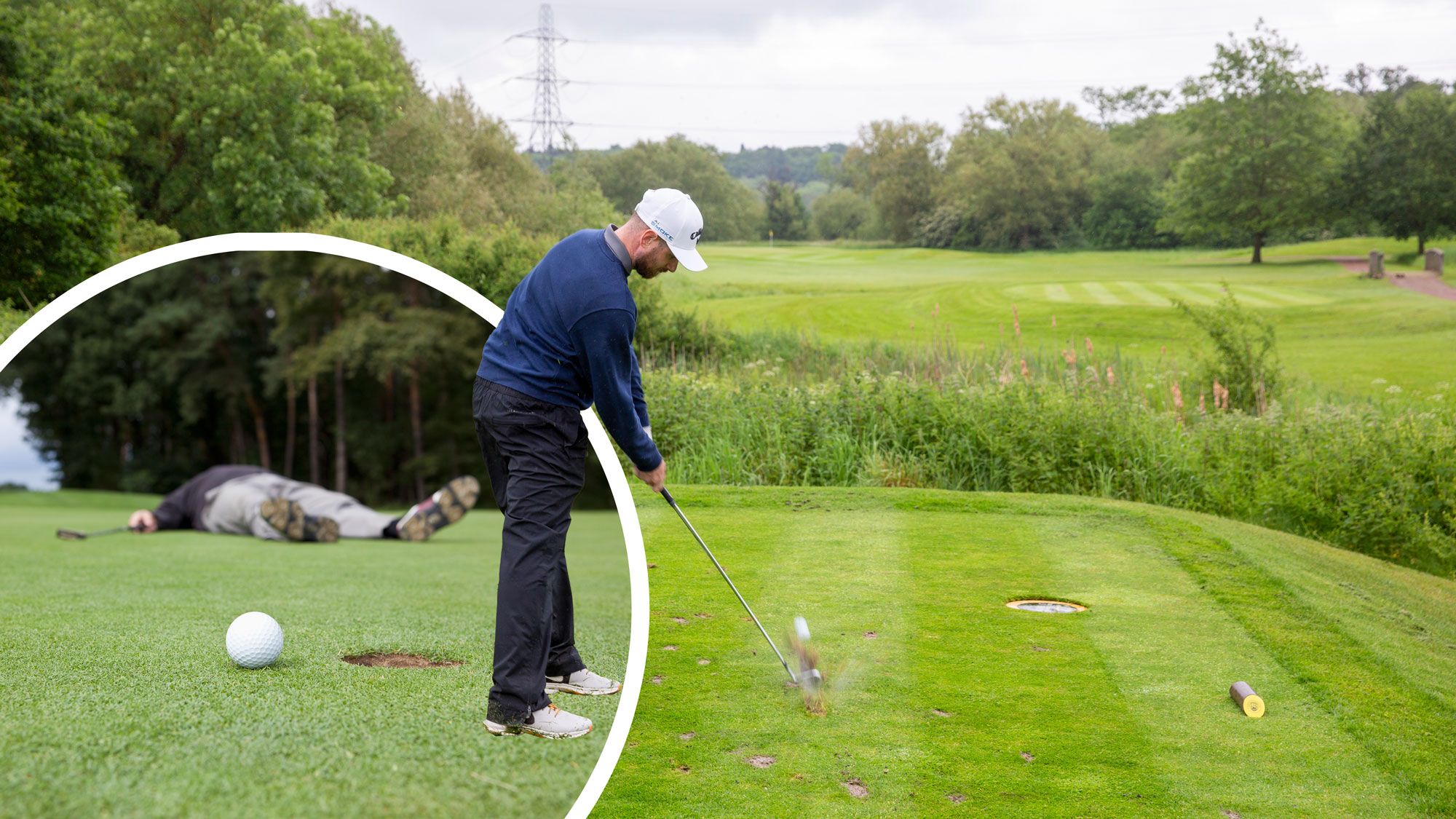John Jacobs: The Master Professional


From his status as Ryder Cup player to his role as the driving force behind the formation of the European Tour, without John Jacobs, today’s game would look very different. In this exclusive interview, Neil Tappin, focuses on his role as John Jacobs golf coach, master professional and the father of modern-day golf teaching...
There is a certain, dare I say it, unenviable responsibility that comes with writing about John Jacobs. This is because any feature with or about the great man needs to place into context his vast impact on the game over a career that has spanned well over half a century. To see him as merely John Jacobs coach is to do him a serious disservice.
He was, first of all, a player of significant note – he competed successfully enough on the European circuit to win big tournaments and earn himself a place in the 1955 Ryder Cup. Jacobs then went on to become the driving force behind the creation of today’s European Tour, his determination to secure better sponsors and prize funds, ensuring that Europe’s best would be able to showcase the game to the world. Add two stints as Ryder Cup captain and his role in pioneering the emergence of floodlit driving ranges (which would open the game to a far wider audience), and it is impossible to over-emphasise Jacobs’ influence on our beloved sport.
Arguably his greatest contribution of all however, came was John Jacobs golf coach. In starting with the ball flight and working back from there, Jacobs brought a new, hugely successful perspective to coaching. Such is his influence on the way the game is taught today, that all of us, to some degree, owe this man a debt of gratitude. As Butch Harmon once said, “John Jacobs wrote the book on coaching. There is not a teacher out here who does not owe him something.” Furthermore, in helping shape the games of so many of the world’s greatest ever golfers from Nicklaus and Player to Ballesteros and Faldo, Jacobs’ influence will remain forever etched in the fabric of the game.
Over the course of a few hours we discussed his teaching philosophies, the advice he gave to the greatest players in the world and his take on some of today’s superstars. If you have an interest understanding the golf swing and learning from a man with unparalleled experience, we strongly urge you read on to the great man's perspective, in his own words…
Ball Flight Clues
Golfers of all abilities have a tendency to get too caught up in the aesthetics of the swing and forget about the ball flight. Golf is all about what the ball does. That’s your starting point for diagnosing anything that’s going wrong and of course that totally depends on the contact you make at impact. The flight will tell you what the impact is. So when giving a lesson I would always look down the line to see what the ball flight and swing path are doing. That tells me what the clubface is doing and that’s the most important thing. Impact is controlled by three things - clubface position, the path and the angle (by this I mean where the bottom of the swing arc is). Of those three things the clubface angle is by far the most important. If you can get that right, you can hit good shots.
Get the Golf Monthly Newsletter
Subscribe to the Golf Monthly newsletter to stay up to date with all the latest tour news, equipment news, reviews, head-to-heads and buyer’s guides from our team of experienced experts.
So you get your diagnosis which comes from impact and then you can look at why the impact is like that. It might be grip or that you are hitting late or early, lots of different things but I don’t think you need to be any more specific than what I have just said. The problem for every player is that habit is a very difficult thing to break. Players will often slip back into bad habits over a long time. Understanding the ball flight, for me, is the key to knowing when bad habits are creeping back in.
The Hook
The game is taught so much better now than it used to be. When I was a kid you were taught to hit in-to-out because people were scared of slicing it. But because the ball is to the side of you, the swing arc is naturally in-to-square-to-in. When the swing is in-to-out, you can hit a block or a hook. I think that’s why a lot of the very best players are a little bit over the top – they hit it left-to-straight.
I’d say that most good players are scared of a hook and what is the cause of a hook? The cause of a hook is a closed clubface at impact. I can give you a grip that will help you stop closing the face at impact and it won’t take you six months to work on. Push your left thumb long on the grip, you should feel that you now have a left forearm. Or just grip the club tighter in your right hand. Now your right shoulder will come through. As you get the clubface square at impact your hook becomes a push. That’s very easy to correct - just move the ball further forward in your stance.
I remember the night before the final day of the WGC event at Doral when Bubba Watson and Justin Rose were both challenging. I was with people that evening and I said, “I want Justin Rose to win but I’m afraid Bubba will beat him.” Everyone said, “What, that guy? He can’t play.” In the end Justin did go on to win and I was wrong but soon after this, Bubba won the Masters. The reason I think so highly of him is that he’s a ball flight man. He understands all about it. With a driver he was slicing it 50 yards and hitting the fairway. By the time he got to a 9-iron he aimed straight because with more loft in his hands, he creates backspin not sidespin. He understands that. He knows about ball flight, he stands and swings relative to the ball flight. Nobody told me that, that was something I learnt on my own. I was aiming left of the flag with my short irons and hitting them left because you don’t put as much sidespin on the ball. It’s backspin that you create. Would you have said Bubba Watson would ever win the Masters? Maybe not, but he understands ball flight. I wouldn’t teach Bubba Watson to be more orthodox. I would teach him to be better.
Jack Nicklaus
Jack was the strongest mentally there has ever been and that was why he was so good. When I first met him, it was at the Open at Royal Lytham in 1969. He teed it up on the 2nd and hit it 50 yards over the railway line on the right, he then hit a second one which almost hit people on the 15th green, left. Off the 3rd tee he did the same thing. On the 6th tee he turned to me and said, “You’re supposed to know about these things, what do you think?” I said, “Thank God you asked” and it just came out. “The back of your neck is parallel to the ground and you’ll do that all day.” His posture meant he had no room to turn and this was making him rock back away from the ball and then tilt under on the downswing. A better posture would allow him to turn and hit it and he did. Later that year at the Ryder Cup at Birkdale he said, “Hi John, I’ve got it now. I’ll show you on the practice ground.” I said, “Not this week you won’t!” He understood straight away…
Nick Faldo
During my second Ryder Cup captaincy, Nick Faldo, by the middle of the second day, was playing terribly and I said, “I’m going to break my rule and give you a lesson in the morning”. I didn’t give players lessons without them asking me because I didn’t want to upset them. But he was too straight [referring to his upswing arc]. The swing is a rotary action but by and large, not so much now but during my lifetime, better players were frightened of swinging flat. But there is nothing more inaccurate than swinging straight because you run into yourself. You can hit it both sides of the course. [Ed. After losing his first two matches, Faldo went on to beat Johnny Miller in the singles] Faldo was hugely gifted and with David Leadbetter he learnt the backswing. When he parred all 18 holes at Muirfield – that was the best display of ball striking.
Jose Maria Olazabal
I first saw Chema when he was 13. He got down to scratch without me saying anything to him. He had a weak grip and was slightly shut at the top but it all balanced out and I didn’t want to rush in to make him orthodox. But I did notice that he was too much underneath [attacking the ball from underneath the ideal swing plane]. Being underneath traps the club in two directions that are the same – open and in-to-out. Most of the time with a good player, that results in a wicked shot to the right. You can’t come from underneath if you are hitting a driver off the ground. This is because you can’t get the ball in the air without putting some loft on the club and that got him to come through the ball. His angle of attack was his problem and hitting drivers off the ground was the best way to solve it.
I did an article in the 50s for a magazine commenting on two contemporaries of mine - Peter Alliss and Bernhard Hunt. The crux of what I was writing was that Bernhard Hunt was better than he looked and that Peter Alliss wasn’t quite as good as he looked. I played 36 exhibitions matches with Bernhard in South Africa and nobody beat us. Bernhard hit every iron shot straight. It was wonderful. Peter looked marvellous and he was, but he was the Rory McIlroy.
Rory McIlroy has the most beautiful looking swing. I’m not sure he controls the ball as well as a Lee Trevino did but today’s players are not bothered so much now about that. When he’s on he is very, very good. Lee Westwood is such a good player and his swing is an awful lot better than it looks. He sets it beautifully. It all looks a bit clumsy but I promise you it’s very correct, very repetitive. He’s nice and open so he can hit the ball without fear of going left. I do hope he wins a major.
Lee Westwood swing sequence
Teaching philosophy
I am hugely confident at teaching golf. You can’t put anyone in front of me who I can’t recognise what’s happening. Whereas with my golf, I was very good at matchplay but in medal play, I was a bit too defensive. When teaching someone I’d ask how often do you play, what’s your handicap, what’s the best you’ve ever been and then ask them to hit some shots. Then you can assess the situation. I made a mistake early in my career, thinking I could make everybody right.
A good friend of mine is a big slicer of the ball but it starts left and finishes straight. I said to him, “if anyone says you’re a slicer just tell them that Jacobs says it’s a power fade!” So I don’t bother with him, he hits the same shot every time and he plays ever so well.

In July 2023, Neil became just the 9th editor in Golf Monthly's 112-year history. Originally working with the best coaches in the UK to produce instruction content, he has also presented many Golf Monthly videos looking at all areas of the game from Tour player interviews to the rules of golf.
Throughout his time with the brand he has also covered equipment launches that date back well over a decade. He clearly remembers the launch of the Callaway and Nike square drivers as well as the white TaylorMade driver families, such as the RocketBallz! If you take a look at the Golf Monthly YouTube channel, you'll see his equipment videos dating back over a decade! He has also conducted 'What's In The Bag' interviews with many of the game's best players like Rory McIlroy, Dustin Johnson and Jon Rahm. Over the years, Neil has tested a vast array of products in each category and at drastically different price-points.
Neil is currently playing: Driver: TaylorMade Stealth Plus Fairway Wood: Titleist TSR2 Hybrid: Titleist TS3 Irons: PING Blueprint S (4&5), PING Blueprint T (6-PW) Wedges: Titleist Vokey SM7 50˚, 54˚, 60˚ Putter: Odyssey Triple Track Ten Ball: Titleist Pro V1X
-
 PGA Tour Truist Championship Creator Classic Line-Up And Format Revealed
PGA Tour Truist Championship Creator Classic Line-Up And Format RevealedThe PGA Tour has announced the line-up for the second Creator Classic ahead of the Truist Championship - with YouTubers from outside golf taking on the challenge
By Paul Higham
-
 Are You Tired Of Your High-Handicap Golfer Status? These 4 Substantiated Tips Are Your Salvation
Are You Tired Of Your High-Handicap Golfer Status? These 4 Substantiated Tips Are Your SalvationBeing a high-handicap golfer is not easy, with consistency being difficult to establish and progress hard to come by... until you try these four simple tips!
By Barry Plummer